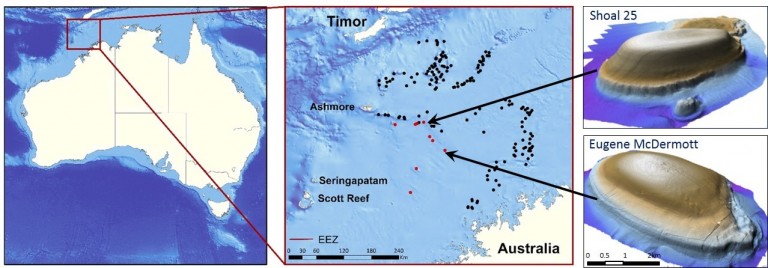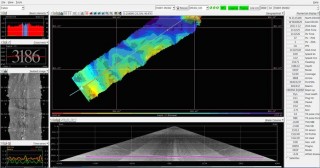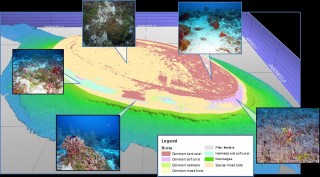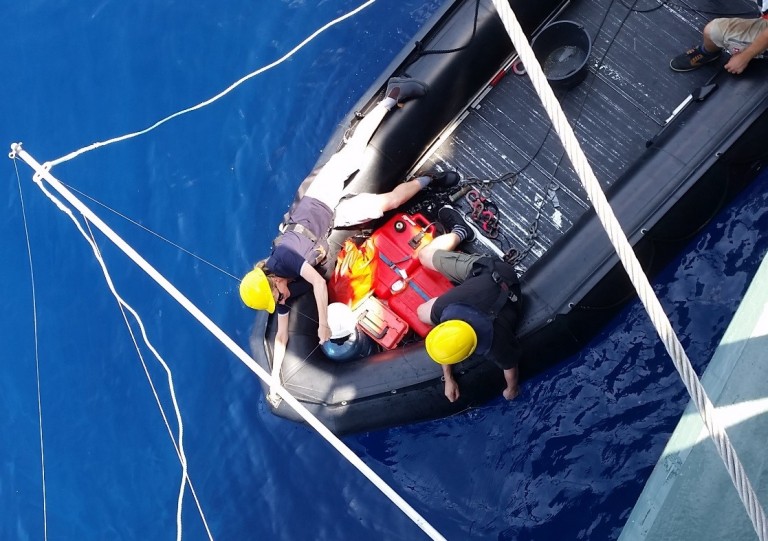During this Falkor Cruise, in addition to Scott Reef, we will be exploring other deeper coral reefs in remote areas of the Timor Sea. The extent of these deeper reefs, also known as shoals, form a very significant network of coral reef habitat between Indonesia and Australia. We have only recently started to document the scale of these shoals, and many of these areas still remain many undiscovered. However, we already know they have significant value forming habitat for abundant fish species with high biodiversity.
The reason why some of these shoal systems have remained hidden is because in most cases they are not close to the surface, starting at depths of 20 meters or deeper. From the ocean’s surface they remain largely unseen so there is a significant challenge in finding these shoals and documenting their extent and biodiversity.

Seeing with sound

It is well know that many marine animals use sound, known as echolocation, to navigate and orientate themselves in the marine environment. We also use a very specialized sonar system on Falkorcalled multibeam. A mutlibeam sonar sends out sound waves that bounce off the sea floor and, by measuring these returning waves, allows the science team to make a sound map of the shoals. UsingFalkor’s ROV we can navigate around this soundscape and explore the different habitats it reveals.

Combining these ROV images and the sonar data using statistics allows us to make three dimensional models of the shoals and their different coral, sponge and plant habitats. These models combined with the oceanographic data also collected on this cruise will permit us to have a better understanding of how the shoals function and what allows them to support high biodiversity of plants and animals including many fish species.
Sounding out the water column
The Falkor also has another type of ecosounder called an EK60, this is used for a different purpose from the multibeam. EK60 echosounder can scan for all sizes of objects from small plankton (small animals and plants) to large fish in the water column, not just on the sea floor. Water column echosounders send sound waves through the water that bounces or echos off anything that it hits and is picked up and measured by a receiver. The science team is particularly interested in productivity associated with upwelling on the shoals. This is likely to be an important process driving the high biomass and species diversity associated with these shoals.
Juggling balls

Today in the quiet still waters of South Scott lagoon we are calibrating this equipment using tungsten carbide spheres which have a known signal in the water column. This is to ensure we know the exact size of the organisms that we are measuring in the water column. The process is a bit of a juggling act to position the balls under the boat in the path of the sonar system.

